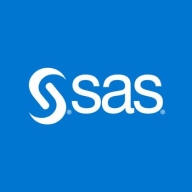

SAS Access and Teradata are key players in data management and analytics. Teradata tends to have the upper hand due to its superior analytical capabilities and scalability features.
Features: SAS Access offers seamless data source access through multi-vendor partnerships, intuitive analytics features, and robust data manipulation tools. Teradata provides high-performance processing, scalable analytical engines, and real-time data analytics suitable for complex environments.
Ease of Deployment and Customer Service: SAS Access is known for easy deployment and integration with existing systems, backed by consistent customer support. Teradata, though complex in setup due to enterprise-level capabilities, offers extensive resources and support to optimize deployment processes.
Pricing and ROI: SAS Access has lower initial costs, which is appealing for immediate data solutions. Teradata’s higher up-front costs provide greater ROI in the long term due to advanced analytics and scalability. SAS Access fits straightforward tasks economically, while Teradata offers significant value through its advanced capabilities.


Teradata is a scalable data analytics platform designed to meet enterprise demands for large-scale data management and processing, focusing on performance, scalability, and security for complex query executions.
As a leading data warehousing solution, Teradata integrates advanced analytics enabling organizations to derive insights from massive datasets. It supports high-volume data workloads with its architecture optimized for analytical queries. Users benefit from its robust scalability, allowing seamless expansion as data grows. Teradata's SQL engine is compatible with a wide range of data types, ensuring flexibility in data analysis. With advanced security measures, it protects sensitive data across various environments, providing peace of mind to users handling critical information.
What are the most important features of Teradata?Teradata is widely used in industries like finance, telecommunications, and healthcare, where data-driven decisions are critical. Companies leverage its robust analytics capabilities to enhance customer experiences, streamline operations, and ensure compliance with regulatory requirements. In these sectors, quick access to data insights can significantly impact competitive advantage.
We monitor all Data Integration reviews to prevent fraudulent reviews and keep review quality high. We do not post reviews by company employees or direct competitors. We validate each review for authenticity via cross-reference with LinkedIn, and personal follow-up with the reviewer when necessary.